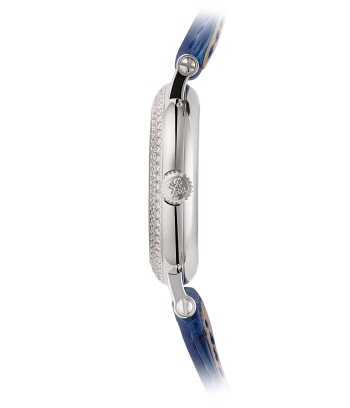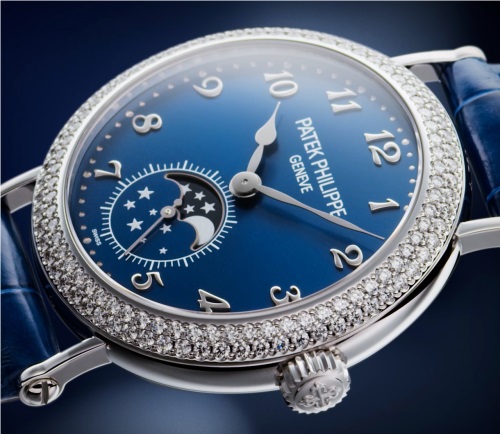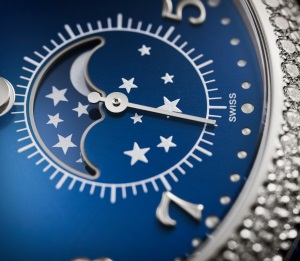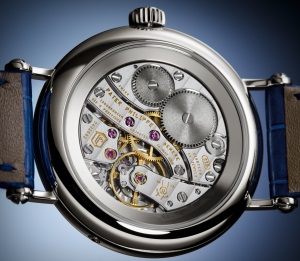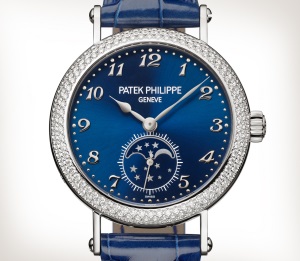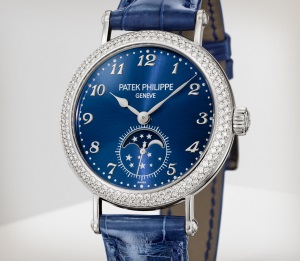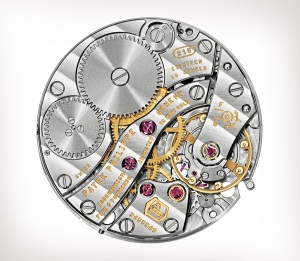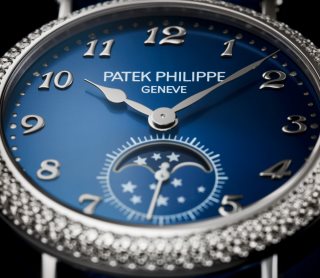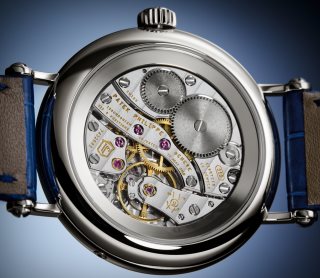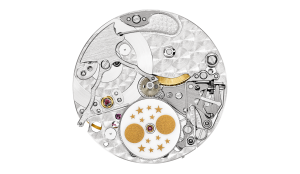Introduction
7121/200G
-
Complications
Manual winding
A complication much appreciated on ladies’ watches, the moon-phase indication has enjoyed pride of place since 2013 on Reference 7121J. Patek Philippe reinterprets this mechanical poem by equipping it with a white gold case and an elegant blue dial on which the displays stand out like stars in the night sky. The dial is enhanced by a sunburst decoration creating subtle light effects. The Manufacture also reinforces the jewelry dimension of this model by illuminating its bezel with a double row of 132 brilliant-cut diamonds based on the exclusive lacy Dentelle gemsetting technique.
Beating at the heart of this jewelry-watch is manually wound mechanical Caliber 215 PS LU: the smallest Patek Philippe complicated movement that helps maintain a daintily elegant 33 mm case diameter.

